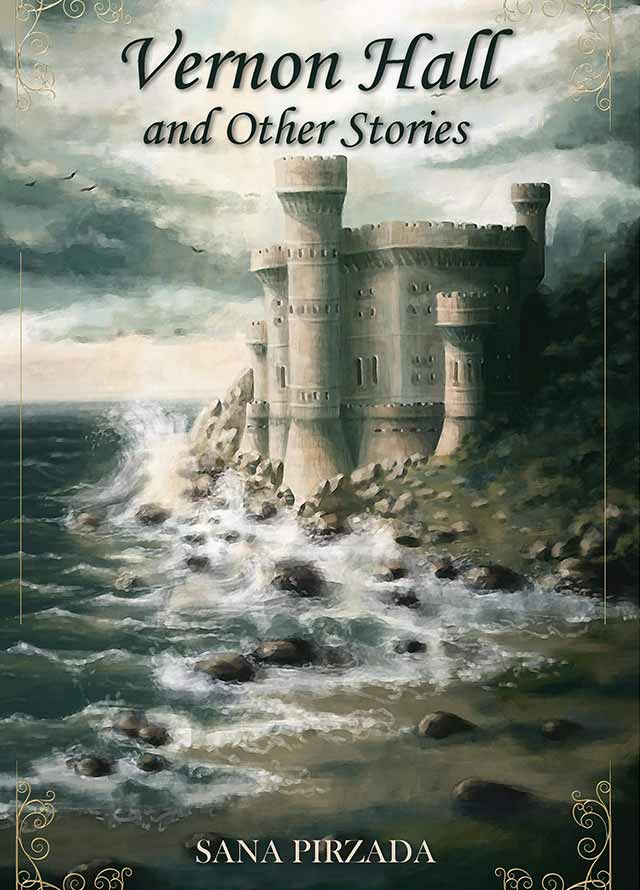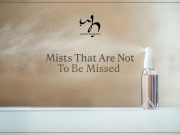
Fairy tale romance, spell bounding themes of darkness, peculiar haunting mysteries, and European castles; the gothic genre is well-known for a being a mystical blend of such elements, and the writing style has been captivating me ever since I started reading. Vernon Hall and Other Stories by Sana Pirzada is a gothic fiction book of tales revolving around the elements of the mythical, the majestic, and the macabre. I had been pining for this book, mostly after having completed Sana Pirzada’s first novel The Rose Within – A Gothic Romance. Besides being a fictional writer, the author is a barrister and also a musician. Her first novel received several British awards and nominations, eventually aspiring her to pen down another piece of “Hauntingly beautiful tales of love, loss and redemption.”
The book consists of four stories with The Vernon Hall being the novel’s paramount and the longest written one. The female author has put beautifully sentimental quotes before each story (a poetry in the case of The Vernon Hall), which acts as the core theme of the tales composed.
The mysteriously enchanting tale The Vernon Hall starts with England’s capital London dying in shambles. The war is ravaging and amidst the wrecked and the havoc, lies the gradually diminishing family of Christine Mallory, whose mother is in a deplorable state and whose husband is at war, and is very less likely to return alive. Christine’s mother Eleanor reveals a clandestine journal to her daughter. As instructed by her mother, the naïve Christine travels to the Whitstable town looking for the mysterious castle, The Vernon Hall, which she inherited from Eleanor. Upon finding and entering Vernon hall, Christine riffles through the pages of the journal, which reveals the dramatic life of her mother, the haunting secrets and the disturbing history of the notorious Vernon Castle.
Eleanor was adopted at a young age by the lonely owner of the Vernon Hall Ms. Amelia Vernon right after her father dies in a shipwreck near the Whitstable beach. Throughout the years, the love for Amelia in the heart of Eleanor surpasses the confined lines of God as she embalms Amelia’s body soon after she dies. She revolts against the town pastor Franklin and his son Gerald (who is also in love with Eleanor).
The days after the embalming of Amelia are witnessed by Eleanor seeing perplexing and odious hallucinations, nightmares and haunting apparitions, especially of a maid with a pearl necklace. The apprehensive servants are also coerced to leave the castle, believing that it is now cursed.
Throughout the tale, one can beautifully observe the succinct writing style of the author. Sana Pirzada has marvelously stirred the elements of mystery, thriller, romance, and darkness, all meticulously smothered over the gloomy lives of mesmerising gothic characters.
Soon Eleanor falls in love with the charming Ezekiel Lloyd who explains his mournful past to Eleanor. Her love is intensified and she imagines the perfect fairy tale wedding with him. Later, the past told by Ezekiel is proven to be fallacious once Eleanor is informed that Ezekiel Lloyd was the name of one of the evil dark monks who used to practice dark magic at the Vernon Hall many years ago.
The doubt about Ezekiel turns out to be true as the one called Ezekiel Lloyd unravels himself as Christopher Vernon, Amelia’s mentally unstable brother who was sent into exile by his own sister right after he had murdered Scarlett, the castle driver’s niece and the house maid; whose ghost keeps haunting Eleanor and the other servants at Vernon Hall. Once caught, Ezekiel confesses that he wanted to marry Eleanor to regain the ownership of the Vernon Hall as Eleanor was declared Amelia’s heir and not him. He runs to the nearby cliff and jumps off.
Heartbroken Eleanor finally ponders over her decision of embalming Amelia’s body and decides to give her a proper Christian funeral. While burying Amelia, Eleanor writes in her journal, “It was a painful farewell. Seeing the casket descend into the deep, dark grave made me shudder and cry. This was the moment I had dreaded, the moment I had to let her go. But the subtle smile on her lips reassured me that her soul was now free.”
Eleanor marries Gerald and makes her final decision of settling in London and leaving Vernon Hall and its tormenting memories behind. The tale reaches its climax by justifying the authors quote that “In The End, Love conquers all.”
Lord Ravenson is the first short tale of the book revolving around the hopeless and forlorn life of grotesque writer Willoughby who is a victim of critic and mockery. He is in love with Geraldine but her father Lord Ravenson is far from pleased in handing over his daughter to such a mediocre. He heads far from town and encounters Sir Charles (a national fighter thought to be dead) in the woods. Sir Charles is a werewolf and begs Willoughby to kill him with his own silver bullets. While taking his last breaths, Charles addresses Willoughby as Lord Ravenson, which makes the lad curious.
While continuing his journey, Willoughby’s second encounter is with a girl named Clara trapped in a tower. Willoughby rescues her from the vampire Price Heinrich. In an attempt to escape, the vampire prince is killed while addressing Willoughby as Lord Ravenson, which again triggers Willoughby’s curiosity. He decides to return back and is struck by a crow while riding. He later wakes up in the arms of his lover Geraldine who informs him of her father’s death and since they can now marry, he is to inherit all of his father in law’s property and become the new Lord Ravenson. This justifies the beings referring to him as Lord Ravenson.
Madame De Quincey is about Penny Brown who once encounters a fairy in the infamous meadow. She offers Penny a door to a new life away from her squabbling parents, yet she runs away. After years when she revisits the place, she sees an old house. The owner is an old lady who welcomes her and later is found out to be the same charming fairy. Penny Brown sacrifices herself in order to give that old lady the same bewitching charm she had years ago because she truly loved her, and because of this true love, she immolates herself.
The Withering Mistletoe is the narrative of Horace, a young lad whose mother is gravely ill. Once his father asks him to fetch some medicines for his mother. While returning, Horace finds shelters from the storm at the abandoned Thorn Manor. There he meets the haunting spirit of Baroness who is devastated because her only son Ingram left her in hatred because she had stopped him from marrying a materialistic girl. The little boy decides to help the spirit by seeking Ingram and convincing him to visit the girl he wanted to marry. The girl bluntly confesses that she only loved him for his wealth. Ingram realises and returns to his mother’s spirit back at Thorn Manor. On his way, Horace finds his mother recovered. The story gives the moral lesson that the love of a parent for their child is endless.
I would critique Sana Pirzada for discriminating between The Vernon Hall and the other three stories. While the tale of Eleanor has been penned down ravishingly in a genius manner, the other three tales are the opposite, to a degree that one would question the fact that all four have been written by the same author. Lord Ravenson, Madame De Quincey and The Withering Mistletoe have been delivered in a hasty and a rather rudimentary manner. At some points, the reader may realise that the context of the fables is quite laconic and divested of the creativity deserved, because being a short fairy tale does not mean being short on creativity. Unlike the assiduously crafted The Vernon Hall, which is spiced up with creativity and mystery, the other three seem fit for a child. Even though the theme is gothic, the penning style is nowhere near the iconic gothic mavens such as Jane Austin, Merry Shelly and Oscar Wilde.
To conclude, I would rate this book six out of 10 judging The Vernon Hall alone, which in my opinion, is an excellent piece of vintage gothic literature and one that should definitely be on everyone’s reading list.
REVIEW: Shargeel Sheikh![]()




















































